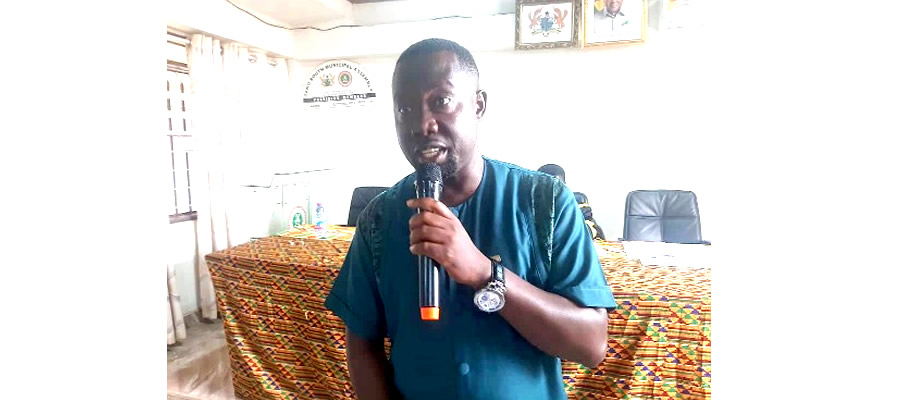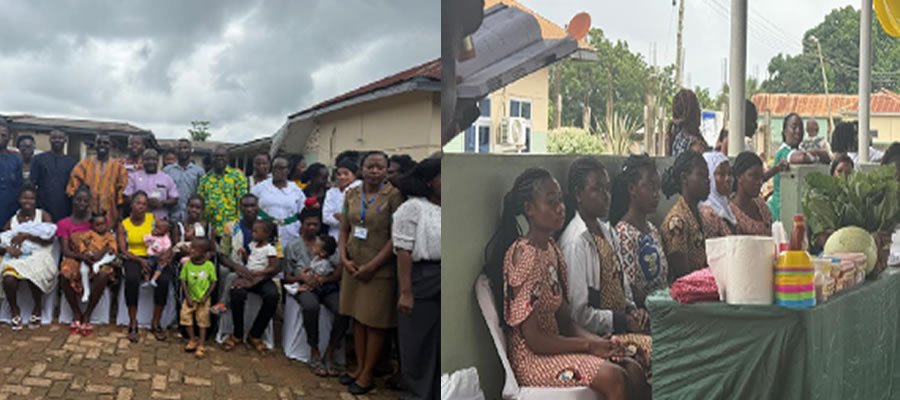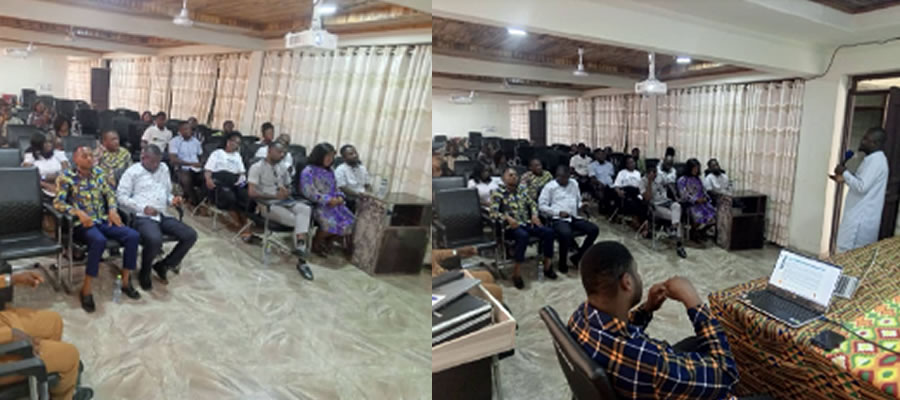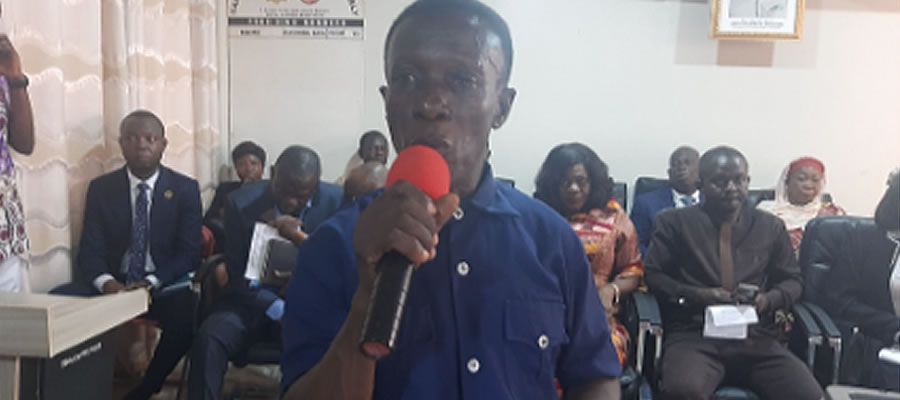

The number of Development Programmes selected depended on the identified priorities for the 2006-2009 District development plan.
The programme of Action covers areas critical to basic living as well as that which stimulate economic development and promote partnership in implementation including economic development, coverage and quality of education, health, water, sanitation, revenue mobilization, gender issues, private sector development and community planning capacity development.
The formulation of programme of Action consists of prioritized set of programmes and their cost. These are intended to enhance the achievement of the prioritized objectives of the plan for the Medium-Term period under the GPRS II. It provides the essential steps that are needed to adequately implement the prioritized programmes of the District. Plan of Action also helps to promote a cross departmental/Sectoral approach towards problems solving in the District.
The cost element of the POA is rough estimates of each of the thematic programmes. Also clearly indicated are the sources of funding such as District Assembly Common Fund (DACF), internally Generated Fund, Development Partners, NGO’s etc.
The tables that follow show programme of action for the smooth implementation of TANO SOUTH MUNICIPAL 4-YEAR MEDIUM-TERM DEVELOPMENT PLAN under GPRS
II (2006-2009).
Implementation Arrangements
Specific interventions have been proposed under the 4-year Medium-Term Development Plan (2006-2009) which have been outlined earlier. Priority projects have also been proposed for the Socio-Economic development of the District, and a summary of interventions provided. Priority projects have been selected taking cognisance of the potentials and opportunities that abound in the District. This will enable the plan to enjoy support with available human and financial resources within the 4-Year Plan period (2006-2009).
In the first year, efforts are to be concentrated on rehabilitation and construction of essential service in areas of water, sanitation and improvement in health services and education. This is in line with attending to the immediate priority and basic needs of the people which include water, sanitation, education, health, gender equality, creation of employment and strengthening of small and medium scale enterprises.
The agriculture sector, which is the most dominant sector of the local economy, will be strengthened in the first and second years of implementation to serve as a catalyst for rapid growth in the economy of the District. The private sector which is the engine of growth will equally be given prompt attention.
The effective implementation of the 4-Year District Medium Term Development Plan (DMTDP), calls for an approach that seeks to optimise the utilisation of available internal and external resources.
Consequently, the implementation strategy will be
- Mobilisation of local resources
- Partnership with external agencies
- Judicious use of available resources, and
- Cohesive institutional linkages and networking.
Mobilisation Of Local Resources
An effective mobilisation of local resources both human and material will go a long way to ensure smooth implementation of the plan. The active participation of the local communities in the planning and implementation of the 4-Year Medium Term Plan is very crucial. Because effective planning and implementation of programmes and projects are interactive processes and it takes place among people and between institutions at different levels. Therefore the successful implementation of the plan will depend on:
- Availability of funds
- Effectiveness of the plan in terms of degree of local involvement.
- Level of community involvement and the willingness to contribute labour, money and other local resources.
- And adequate local institutional support.
The Decentralised Departments in the District will be encouraged to play active roles in the implementation of their respective sectoral plans. Co-ordination among the Decentralised Departments will ensured to bring about the advantage of sectoral integration for the implementation of the entire Development Plan.
Partnership With External Agencies
Even though, the District is independent in terms of planning and administrative decisions at the local level, limitation of human and financial resources make it imperative for the District to seek external support.
Analysis from the District Assemblies finances is evident that it will be impossible for it to implement any meaningful project from its own resources. Therefore, external resources from the central government, GETFUND, NGO’s and special programmes such as: CBRDP, PSI, NBSSI YOUTH EMPLOYMENT must be vigorously sought for by the Assembly as an important complementary sources of funding to execute the plan.
Lastly, local groups, especially at the community levels will be animated to play active roles in the implementation of some aspects of the Development Plan.
Resource Utilisation
With limited resources; financial, material and human, it is not possible to satisfy the needs of all communities within the 4-Year period.
On the basis of the above, projects have been sited strategically to serve many communities as much as possible. Secondly, projects selected will serve the felt needs of the communities and not political interest.
Institutional Linkages
As much as possible, institutional capacity building will be pursued. The District Assembly will assume an overall central co-ordinating role while outlining institutional responsibilities in conjunction with the various Decentralised Departments and other government agencies. This is to get them actively involved in the implementation of the plan in its totality.
Agencies outside must also be consulted to give assistance to the Assembly’s own implementation and monitoring efforts. Research institutions of the Universities such as BIRD, BRRI, CSIR etc could be of immense help in the areas of planning, training and advice on project implementation, monitoring and evaluation.
In order to achieve some level of integration, planning and project implementation have been worked out in such a way that the development of one sector is linked to the other sectors of the economy of the District. This way the development of feeder roads is meant to positively affect agriculture productivity. Much the same way, the provision of potable water is expected to supplement health delivery in the District.
Project Selection Consideration
Pragmatic approach guided in the selection and location of projects. This was to avoid pressure from communities and authorities. Care was also taken to ensure equitable distribution of projects to ensure that:
Selected projects respond to the priority needs of the community
- Projects selected are accessible to the majority of the people in the Community.
- Technology choice for implementation is user-friendly eg. Cassava –processing machine.
- Resources for implementation is available
- The project will be sustainable eg. A school must have encouraging enrolment role.
- The project addresses the needs of the disadvantaged group in the society.
- The project is aimed at poverty alleviation in the District.
Project Financing
The implementation of projects and programmes under the 4-Year Medium-Term Plan will require huge financial resources. Obviously, such financial resource cannot be generated within the District alone over the planned period. Even with its share of the Common Fund the District will still need extra funding from central government and other agencies.
The main sources, therefore should be:
- District Assembly Sources
- Central Government
- GETFUND
- NGO’S
- CWSA
- WATSAN
- HIPC Relief Fund
- CBRDP
Programme Budgeting System
In order to successfully implement programmes and projects as spelt out in the plan, a programme Budgeting system must be put in place. This allows for allotment of adequate funding to different areas of the programme. This entails a clear description of the projects involved and matching of specific projects or programme budgeting is that it links budgeting to specific prioritised projects. Therefore, any reduction in allocation from the planned budget can be easily identified with a particular project which easily lead to corresponding exclusion of specific projects rather than to squeezing all programmes in efficiently.
It must be noted that the effective and successful implementation of Tano South Municipal 4-Year Medium Term Plan will depend heavily on the authority of the District Assembly, and the participation and integration of all the people in all stages of the development process, namely, project planning, implementation, monitoring and evaluation.
To ensure full community participation, it is important to work through the local chiefs, or traditional rulers, unit committee, Assembly members, community groups and church organisations. Where necessary, these identified groups should be strengthened and assigned progressively participative roles in the district socio-economic development activities.
With this background, planning and implementation of the 4-Year Medium Term Development Plan (2006-2009) should be done in such a manner that local people can assume a full responsibility and ownership of community projects and be trained to operate and maintain the project in order to ensure their long-term sustainability.
Date Created : 11/21/2017 1:21:23 AM












 facebook
facebook
 twitter
twitter
 Youtube
Youtube
 +233 593 831 280
+233 593 831 280 0800 430 430
0800 430 430 GPS: GE-231-4383
GPS: GE-231-4383 info@ghanadistricts.com
info@ghanadistricts.com Box GP1044, Accra, Ghana
Box GP1044, Accra, Ghana